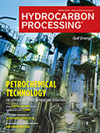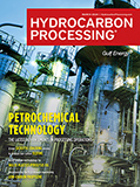Beck, R.
Ron Beck is the Director of marketing strategy at AspenTech. He has been responsible for engineering product marketing, Aspen Economic Evaluation and Aspen Basic Engineering. He has more than 25 yr of experience in providing software solutions to the process industries and 15 yr of experience in chemical engineering technology commercialization. Mr. Beck has authored papers on key industry topics and has presented at several public industry events. He is a graduate of Princeton University in New Jersey.
The EPC executive’s challenge and opportunity: Navigating the sustainability shift in capital projects
According to an industry report published by McKinsey and Co., accelerating the decarbonization of the U.S. economy to achieve net-zero targets by 2050 will require approximately $275 T of cumulative capital spending over the next 30 yr.1
Executive Viewpoint: A vision for the refinery of 2030
The refining business needs to change dramatically over the next decade.
Innovative modeling of heavy crudes provides competitive advantages
The increase in heavy crude production, together with the diversity of heavy crude characteristics and sources, leads to technical challenges in accurately predicting production and refining process performance.
Enhance refinery profitability with modeling innovations
Several improvements are on the horizon, which will add powerful optimization capabilities into the process modeler’s simulation work space in areas like heat integration, column optimization and economics.
How do HPI innovations and best practices transform process engineering?
The cross-discipline integration of modeling and analysis tools can help select the best design options and ensure the safe and profitable operation of process plants.
Improve decision-making for LNG projects via an integrated technology
This approach to modeling and economics cuts through the complexity of project capital investment
- 1
- ... 1 pages

- Nigeria's NNPC partners local firm on new 100,000 bpd refinery 4/25
- Stranded cargo shows credit challenges at Nigeria's Dangote refinery 4/25
- Low U.S. distillate consumption reflects slow economic activity and biofuel substitution 4/25
- Clariant catalysts reduce customers’ footprints by 40 million tons of CO2e in 2023 4/25
- Singapore fuel oil stockpiles hit 20-week lows 4/25
- BASF with solid start to the year: EBITDA before special items in first quarter of 2024 slightly above analysts’ consensus 4/25




